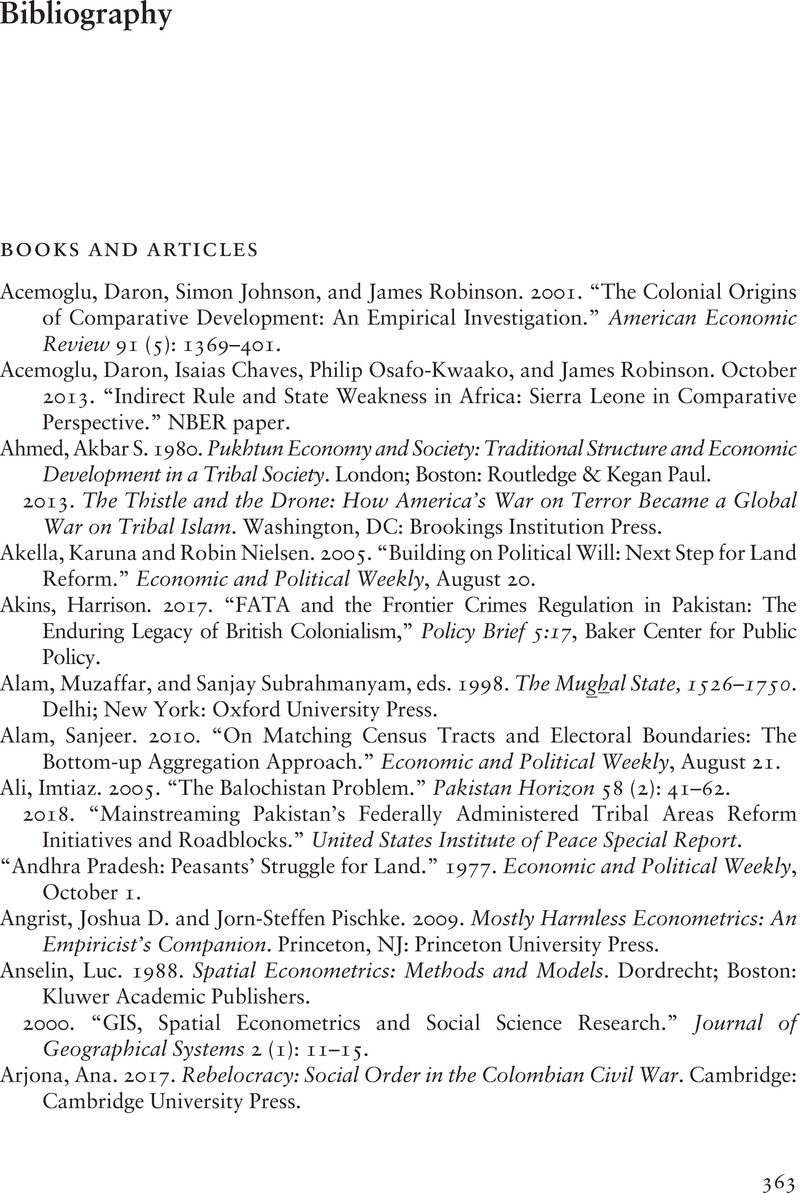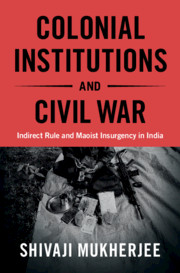Book contents
Bibliography
Published online by Cambridge University Press: 15 May 2021
Summary

- Type
- Chapter
- Information
- Colonial Institutions and Civil WarIndirect Rule and Maoist Insurgency in India, pp. 363 - 380Publisher: Cambridge University PressPrint publication year: 2021



